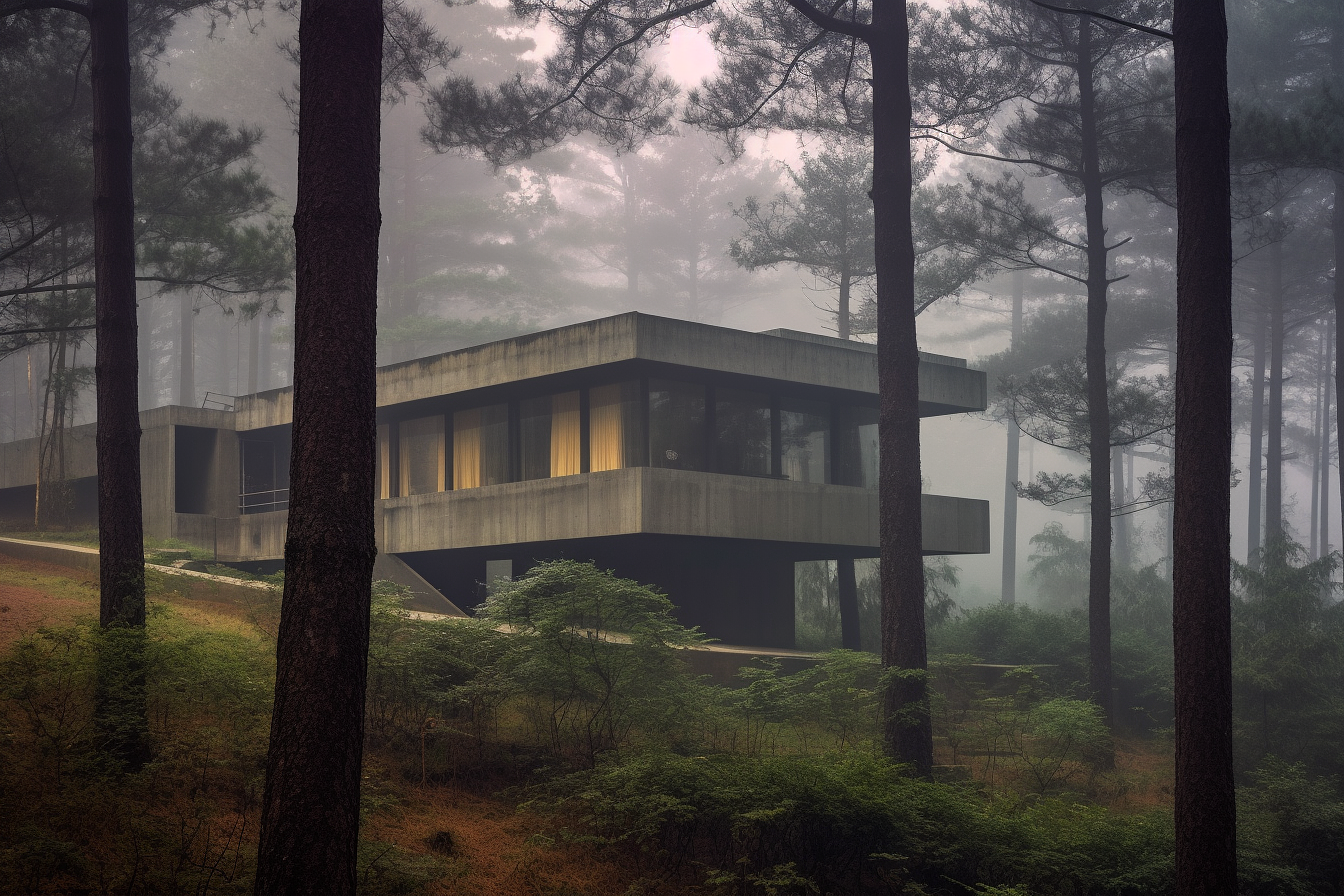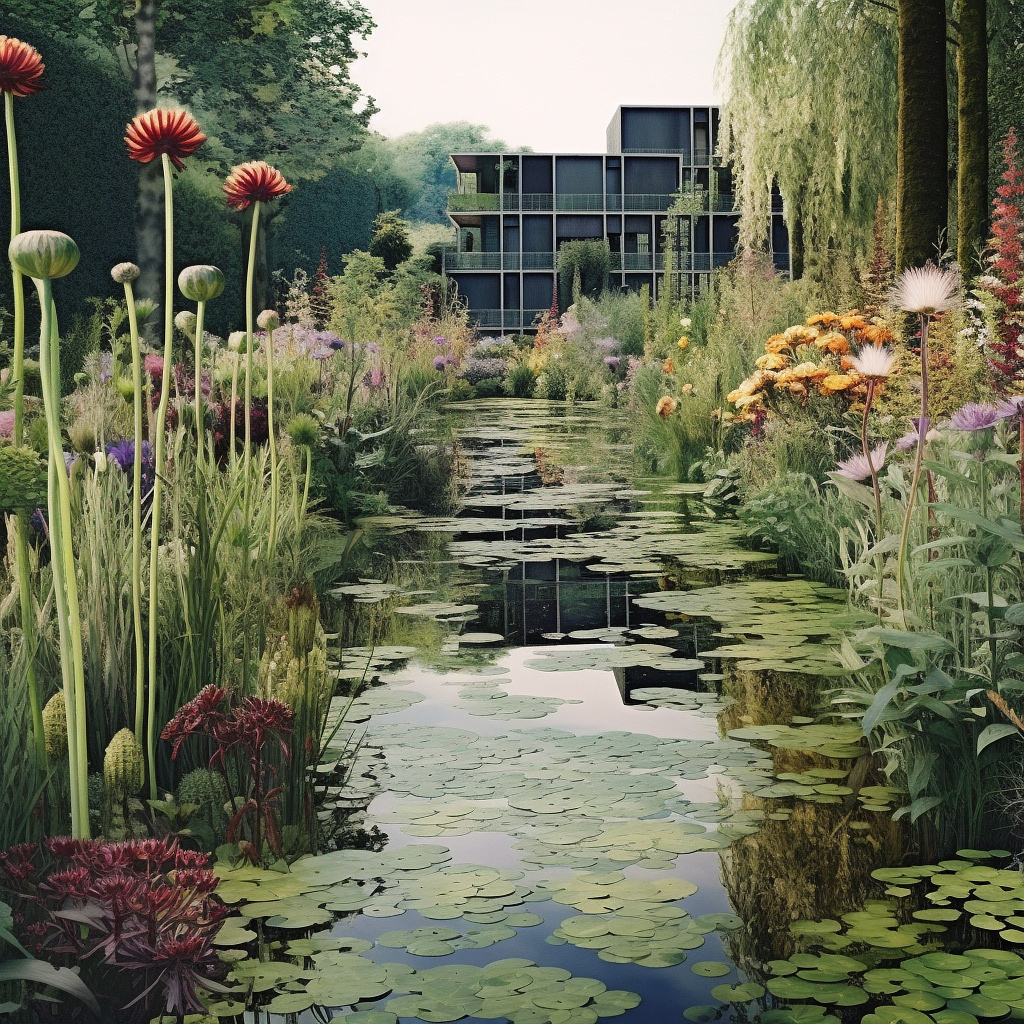
Reviews
Exploring the Role of Early-Stage AI in Architecture Visualization.
The field of architecture is undergoing a transformative phase with the integration of early-stage Artificial Intelligence (AI) into the design and visualization process. This technology holds the promise of accelerating design iterations, enhancing creativity, and providing data-driven insights. However, like any innovation, the use of AI in architecture comes with its own set of advantages, disadvantages, and best practices that architects should be aware of.
Imagine a design process that transcends conventional boundaries. With AI at its side, architecture enters a realm of efficiency and speed previously uncharted. Early-stage AI accelerates design iterations, propelling architects through a multitude of possibilities in record time. This process seamlessly intertwines the architect's ingenuity with the computational prowess of AI, leading to designs that challenge the limits of innovation.
AI doesn't stop at speed – it delves into the very essence of exploration. Architects are no longer confined to a finite set of design options; AI generates a tapestry of variations, each rooted in distinct parameters and constraints. This digital partner introduces architects to uncharted creative territory, ushering in solutions that harmonize user needs, site dynamics, and aesthetic visions.
Harnessing the power of data, AI metamorphoses into an insightful advisor. By dissecting vast data sets – from environmental conditions to user preferences – AI breathes life into data-driven insights that underpin architectural decisions. This fusion of human acumen and AI intellect ensures designs are not only aesthetically appealing but also deeply functional and sustainable.
AI doesn't stop at speed – it delves into the very essence of exploration. Architects are no longer confined to a finite set of design options; AI generates a tapestry of variations, each rooted in distinct parameters and constraints. This digital partner introduces architects to uncharted creative territory, ushering in solutions that harmonize user needs, site dynamics, and aesthetic visions.
Harnessing the power of data, AI metamorphoses into an insightful advisor. By dissecting vast data sets – from environmental conditions to user preferences – AI breathes life into data-driven insights that underpin architectural decisions. This fusion of human acumen and AI intellect ensures designs are not only aesthetically appealing but also deeply functional and sustainable.
Yet, this journey is not without its challenges. The reliance on high-quality data emerges as a cornerstone. The strength of AI lies in its data, and architects must be vigilant to ensure the data employed in training is comprehensive and reliable. A misstep here could lead to unreliable recommendations and hinder the creative process.
A poignant concern surfaces – the delicate dance between creativity and computation. While AI's design spectrum is vast, it may fall short in capturing the nuanced imagination and instinct of human architects. The human touch, a hallmark of architectural marvels, must find harmonious coexistence with AI's digital prowess.
As AI steps onto the architectural stage, the preservation of ethical integrity assumes paramount importance. The unconscious perpetuation of biases embedded in training data casts a shadow on AI's potential. Architects must meticulously scrutinize AI-generated designs, striving for inclusivity and cultural sensitivity.
A poignant concern surfaces – the delicate dance between creativity and computation. While AI's design spectrum is vast, it may fall short in capturing the nuanced imagination and instinct of human architects. The human touch, a hallmark of architectural marvels, must find harmonious coexistence with AI's digital prowess.
As AI steps onto the architectural stage, the preservation of ethical integrity assumes paramount importance. The unconscious perpetuation of biases embedded in training data casts a shadow on AI's potential. Architects must meticulously scrutinize AI-generated designs, striving for inclusivity and cultural sensitivity.
As architects embark on this transformative journey, collaboration emerges as a guiding principle. AI becomes a collaborator, a partner in the design process. A synergistic union between human creativity and AI logic yields designs that transcend the boundaries of imagination.
The compass points towards data quality – the bedrock of AI success. Architects must curate datasets that mirror real-world scenarios, reducing the risk of skewed or prejudiced outcomes. This fosters designs that are representative, unbiased, and inherently reliable.
Ethical considerations illuminate the path forward. Architects must embrace the role of guardians, actively combating biases and fostering inclusivity within AI-generated designs. An architect's responsibility extends beyond aesthetics – it encompasses the cultural and societal impact of their creations.
Continuous learning emerges as a beacon in this transformative era. Architects, the torchbearers of innovation, must embrace ongoing education to stay attuned to AI advancements and adapt their design paradigms accordingly.
In the symphony of AI and architecture, balance becomes the crescendo. A harmonious blend of AI-driven automation and human intuition maintains the soul of architectural craftsmanship.
Embracing an iterative approach, architects leverage AI to lay the foundation and then intricately craft designs with human expertise and insight. This dance of creation ensures that AI remains a tool, a brushstroke, within the masterpiece painted by the architect's visionary hand.
The compass points towards data quality – the bedrock of AI success. Architects must curate datasets that mirror real-world scenarios, reducing the risk of skewed or prejudiced outcomes. This fosters designs that are representative, unbiased, and inherently reliable.
Ethical considerations illuminate the path forward. Architects must embrace the role of guardians, actively combating biases and fostering inclusivity within AI-generated designs. An architect's responsibility extends beyond aesthetics – it encompasses the cultural and societal impact of their creations.
Continuous learning emerges as a beacon in this transformative era. Architects, the torchbearers of innovation, must embrace ongoing education to stay attuned to AI advancements and adapt their design paradigms accordingly.
In the symphony of AI and architecture, balance becomes the crescendo. A harmonious blend of AI-driven automation and human intuition maintains the soul of architectural craftsmanship.
Embracing an iterative approach, architects leverage AI to lay the foundation and then intricately craft designs with human expertise and insight. This dance of creation ensures that AI remains a tool, a brushstroke, within the masterpiece painted by the architect's visionary hand.
In the end, early-stage AI in architecture visualization weaves a narrative of design acceleration, creative exploration, and data-driven brilliance. As architects stand at the crossroads of tradition and innovation, the collaboration between human ingenuity and AI intelligence promises to sculpt a future where architectural wonders thrive – a testament to the enduring spirit of creativity.
All images generated by NATA.ARCHVIZ with the help of midjourney AI.
All images generated by NATA.ARCHVIZ with the help of midjourney AI.
You must be logged in to post a comment. Login here.
About this article
As the realm of architecture evolves, a dynamic fusion between creativity and technology is reshaping the design landscape. Early-stage Artificial Intelligence (AI) has emerged as a potent tool in architectural visualization, offering architects the potential to amplify their creative potential while navigating a landscape of opportunities and challenges.
visibility114
favorite_border0
mode_comment0










